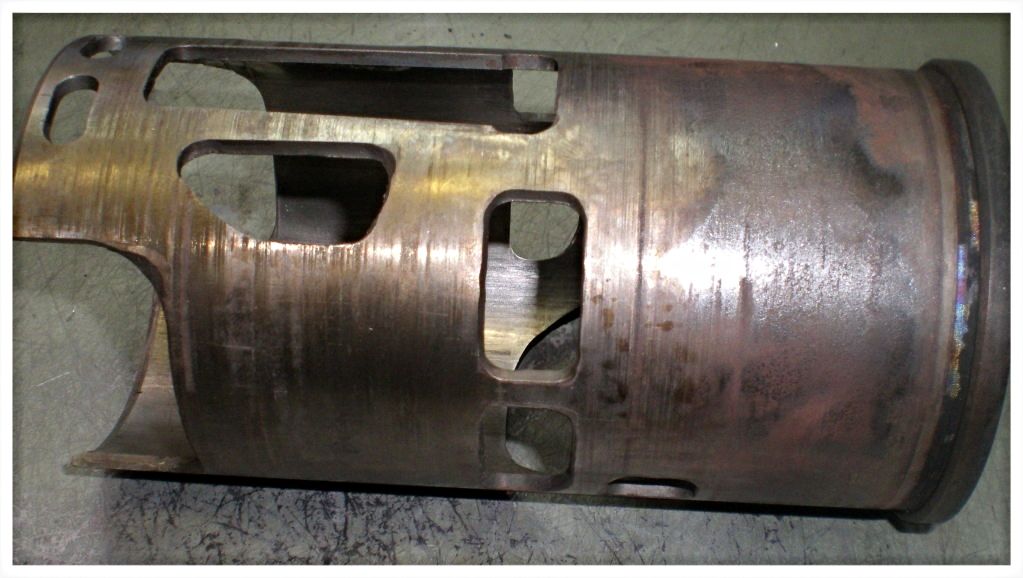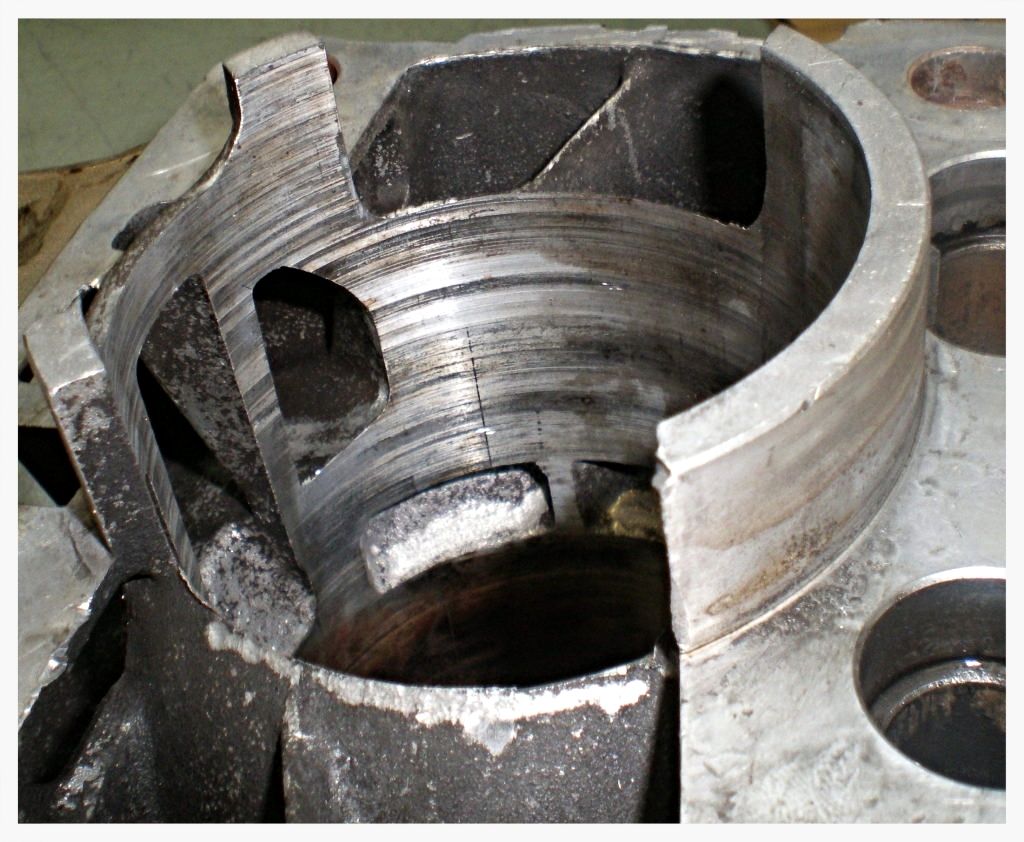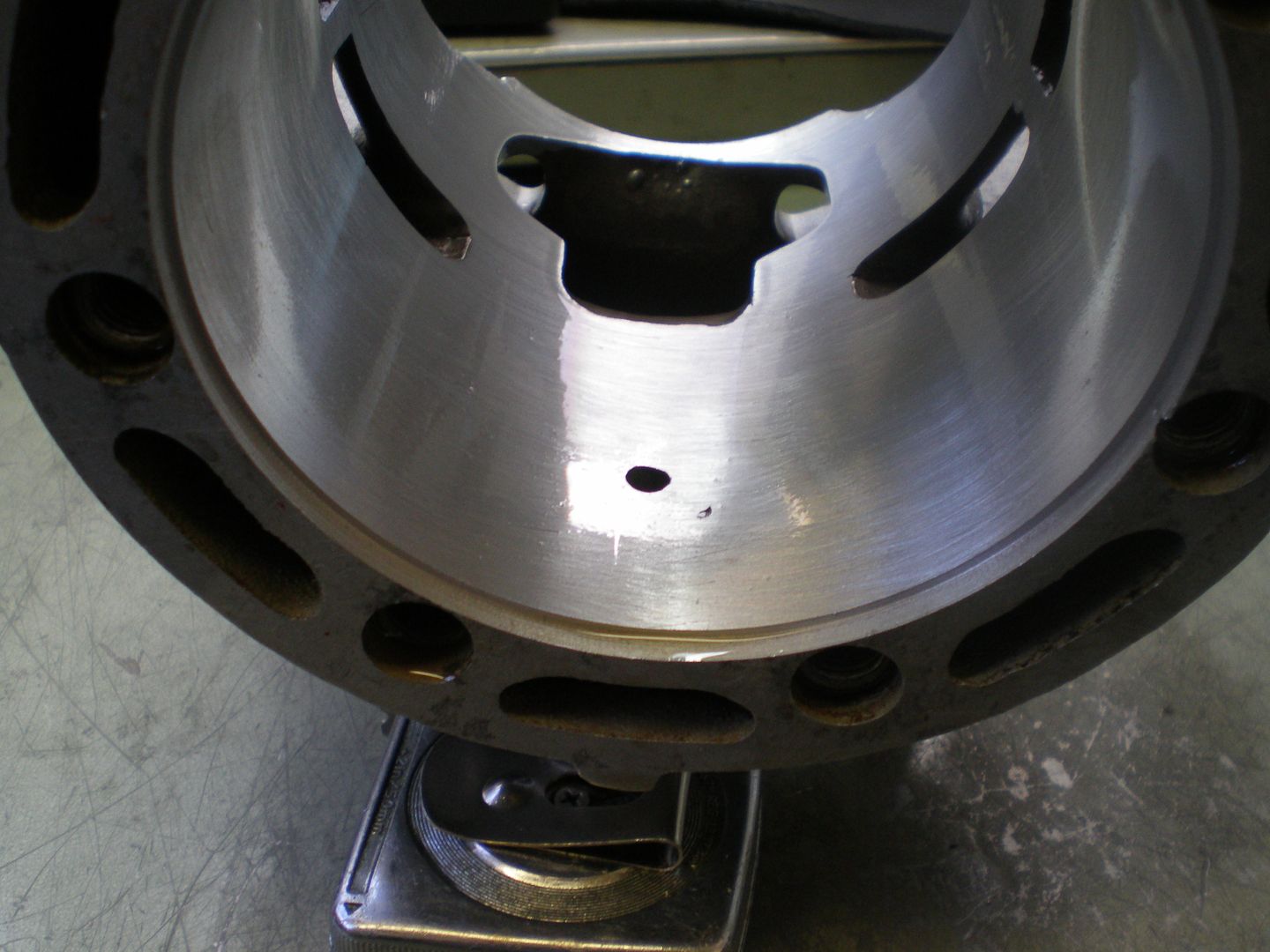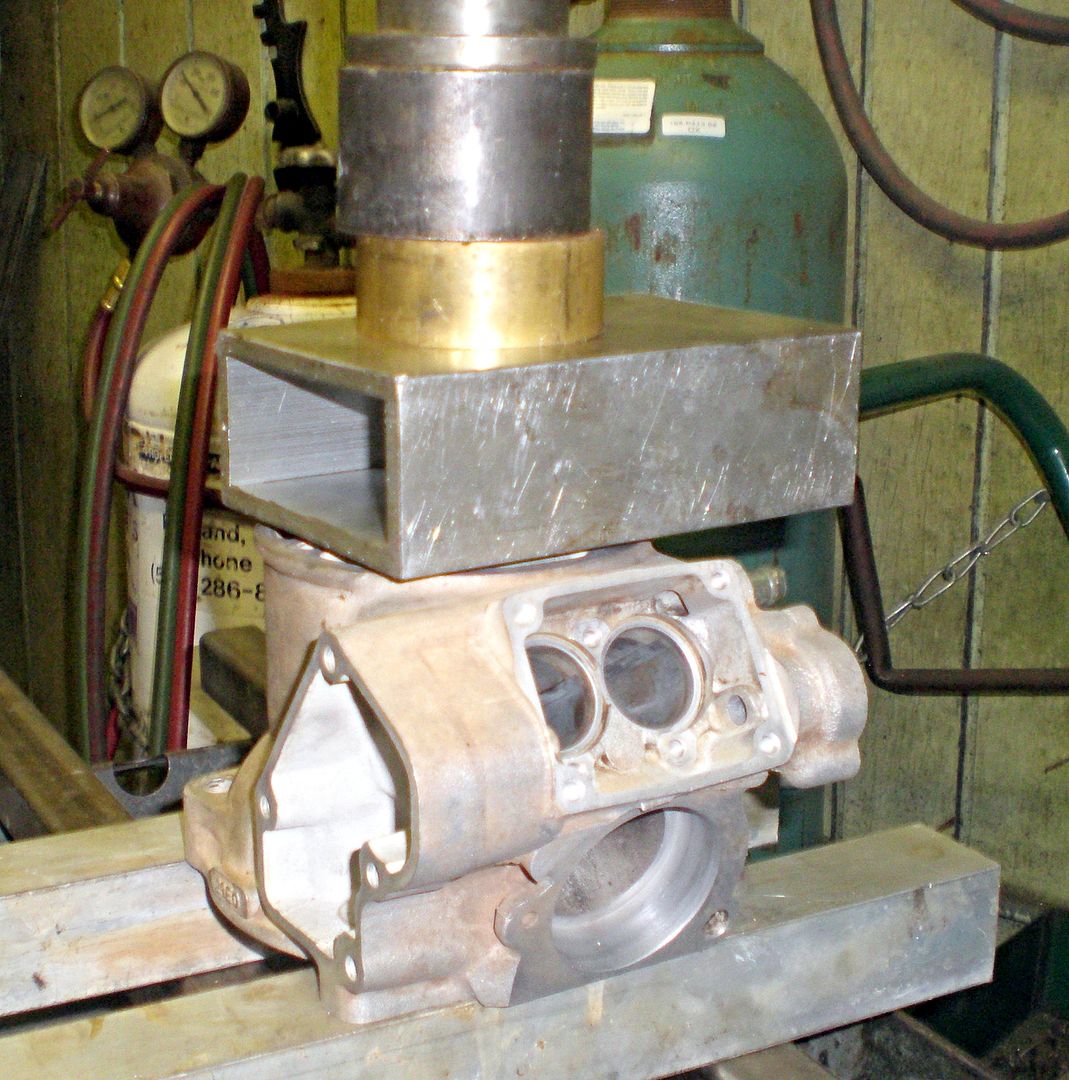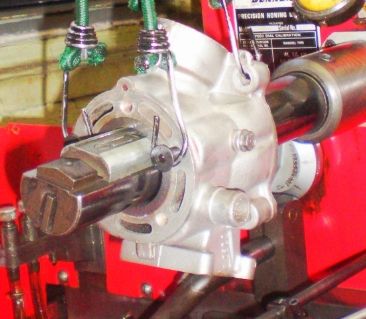Using your 3 jaw chuck to mount your cylinder
Did you ever have a need to mount a cylinder to clean a top or bottom gasket surface
This is a technique which we occasionally use when a center & mandrel are in the way.
We first need an extra set of jaws; the jaws are mounted on the chuck & clamped as usual.
With this particular application 3, 1” round rods were welded to the extra set of jaws
The problem with my idea is that a 2” 125cc cylinder was too small to fit over the 3 extended jaws. Next was the problem of accurately machining the jaws to accept the 2” bore cylinder. The jaws needed to be expanded & machined under load to be accurate.
I scrounged a length of ¼” brass rod which could be any ¼” rod; also a small cut of round tube. Brad drilled a ¼” hole in each chuck jaw.
After the 3 holes were drilled the 1” pieces of brass rod were inserted.
Finally I slipped the piece of tube over the 3 brass rods & opened the chuck lightly to put a load on the jaws.
With the load on the jaws, they can be accurately machined down until the 125cc KTM cylinder fits over.
The 125cc KTM cylinder is counter bored on the upper end of the cylinder which makes things tricky when a new sleeve is installed.
After we slide the cylinder on the jaws, a pipe center is bumped from the tail stock to ensure concentricity of the cylinder.
It’s easy to do the counter boring operation with the tailstock side of the cylinder clear of obstructions.
The base is accurately trimmed
Your questions & comments are more than welcomed; we all learn together.
John Tice
503-593-2908 Alternate 541-508-3944
www.smallenginemachineworks.com & www.nwsleeve.com
Turning Custom Cylinder Sleeves Since 1971
http://forums.everything2stroke.com/...d-the-Shop.com













 Reply With Quote
Reply With Quote